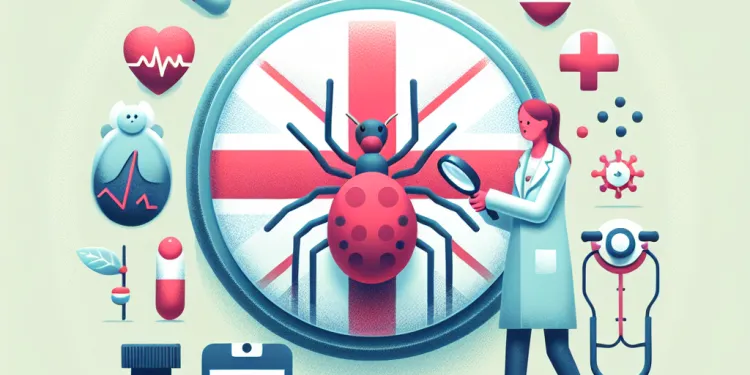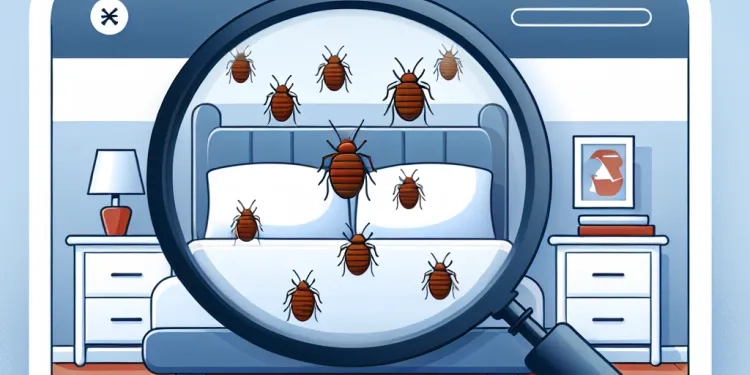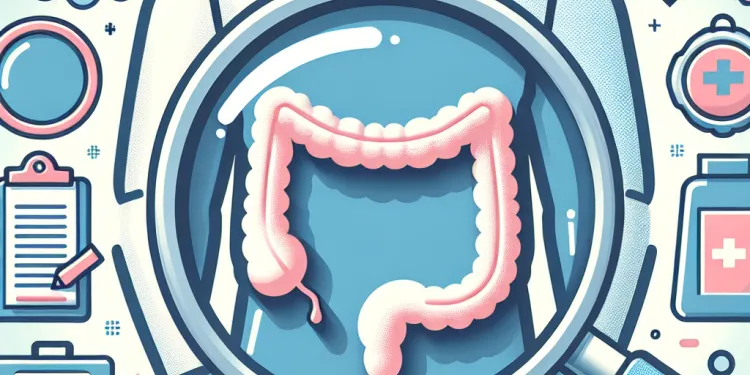
Find Help
More Items From Ergsy search
-

What is the first sign of Lyme disease?
Relevance: 100%
-

What is Lyme Disease?
Relevance: 69%
-

Lyme disease: What is it?
Relevance: 68%
-

How is Lyme disease transmitted?
Relevance: 65%
-

Is there a vaccine for Lyme disease?
Relevance: 63%
-

What are common symptoms of Lyme disease?
Relevance: 62%
-

Can pets get Lyme disease?
Relevance: 62%
-

Can Lyme disease be treated?
Relevance: 61%
-

What happens if Lyme disease is left untreated?
Relevance: 60%
-

What tests are available for diagnosing Lyme disease?
Relevance: 60%
-

How do you prevent Lyme disease?
Relevance: 59%
-

Is Lyme disease contagious between humans?
Relevance: 59%
-

What kind of ticks carry Lyme disease?
Relevance: 58%
-

Where is Lyme disease most commonly found?
Relevance: 57%
-

Can you get Lyme disease more than once?
Relevance: 57%
-

How effective are antibiotics in treating Lyme disease?
Relevance: 56%
-

What is post-treatment Lyme disease syndrome (PTLDS)?
Relevance: 51%
-

Can Lyme disease cause long-term health problems?
Relevance: 38%
-

How long does a tick need to be attached to transmit Lyme disease?
Relevance: 38%
-

What types of antibiotics are typically used to treat Lyme disease?
Relevance: 37%
-

Tick Bites: Should you be worried?
Relevance: 33%
-

Are there first aid courses for pets?
Relevance: 28%
-

What topics are covered in a first aid course?
Relevance: 27%
-

Where was Nipah Virus first identified?
Relevance: 26%
-

What should you do if you find a tick on your body?
Relevance: 26%
-

Leukaemia: What are the signs and symptoms? | NHS
Relevance: 26%
-

What are the signs of autism?
Relevance: 25%
-

What are the signs of meningitis in infants?
Relevance: 25%
-

What are the signs of a bed bug infestation?
Relevance: 25%
-

What are the signs of heat exhaustion?
Relevance: 25%
-

What is Parkinson's disease?
Relevance: 25%
-

Do first aid certifications expire?
Relevance: 25%
-

Where was the Marburg virus first discovered?
Relevance: 24%
-

How is Crohn's disease diagnosed?
Relevance: 24%
-

Symptoms of coeliac disease
Relevance: 24%
-

Can I have visitors on the first day?
Relevance: 24%
-

5 Warning Signs of Online Grooming
Relevance: 24%
-

What is Huntington's disease?
Relevance: 24%
-

Where can I learn First Aid?
Relevance: 24%
-

At what age do symptoms of Huntington's disease typically appear?
Relevance: 24%
Understanding Lyme Disease
Lyme disease is an infection caused by the bacterium Borrelia burgdorferi, often transmitted to humans through the bite of infected black-legged ticks, commonly known as deer ticks. This disease is prevalent in wooded and grassy areas, making it a concern for those who spend time outdoors in affected regions.
Recognising the First Sign of Lyme Disease
One of the earliest and most recognisable signs of Lyme disease is a skin rash known as erythema migrans (EM). This rash typically appears within 3 to 30 days after a tick bite, with an average onset of about 7 days. Annually, it is crucial for those in the UK who engage in outdoor activities to be vigilant in spotting this initial indicator.
Characteristics of the Erythema Migrans Rash
The erythema migrans rash is often described as resembling a bull's-eye. It begins as a small red spot at the site of the tick bite and gradually expands over time. The centre of the rash may clear as it enlarges, creating a ring-like appearance. However, not all EM rashes present with a clear centre, and variations can occur.
The size of the rash varies but typically reaches a diameter of at least 5 cm. It is usually not itchy or painful, though it may feel warm to the touch. This distinctive rash appears in approximately 70-80% of infected individuals.
Importance of Early Detection
Early detection of the erythema migrans rash is crucial for managing Lyme disease effectively. If identified promptly, Lyme disease can often be treated successfully with antibiotics. Delayed treatment can lead to more severe symptoms, affecting the heart, joints, and nervous system.
When to Seek Medical Advice
It is important for individuals in the UK to seek medical guidance if they develop symptoms consistent with Lyme disease, particularly following a known or suspected tick bite. Medical professionals can provide a proper diagnosis and recommend appropriate treatment. Antibiotic therapy is generally effective if administered early, underscoring the importance of recognising symptoms promptly.
Prevention and Awareness
While awareness of the erythema migrans rash is crucial, prevention remains a key strategy in combating Lyme disease. Avoiding tick bites by wearing protective clothing, using tick repellents, and conducting thorough tick checks after spending time outdoors is vital. Understanding the habitat and peak activity times of ticks can further reduce the risk of exposure.
In summary, the first sign of Lyme disease is typically the erythema migrans rash, characterised by its expanding bull's-eye appearance. Early recognition and treatment are essential for preventing further complications, making awareness and preventive measures important for those living in or visiting affected areas in the UK.
Understanding Lyme Disease
Lyme disease is an illness caused by tiny germs. These germs come from black-legged ticks, also known as deer ticks. The ticks can bite people, usually in woods or grassy places. If you like being outdoors, be careful in these areas.
Recognising the First Sign of Lyme Disease
The first sign of Lyme disease is often a special skin rash. This rash is called erythema migrans, or EM for short. It appears soon after a tick bite, usually in about 7 days, but could be between 3 and 30 days. If you live in the UK and enjoy outdoor activities, watch out for this rash.
Characteristics of the Erythema Migrans Rash
The EM rash looks like a bull's-eye. It starts as a small red spot where the tick bit. The rash gets bigger over time. Sometimes, the middle of the rash clears up, making a ring shape. However, not all rashes look the same.
The rash can grow to at least 5 cm wide. It usually does not itch or hurt, but it might feel warm. This type of rash shows up in about 70-80% of people who get Lyme disease.
Importance of Early Detection
Finding the EM rash early is very important. If you notice the rash soon, doctors can treat Lyme disease with medicine called antibiotics. Waiting too long can make the illness worse, affecting your heart, joints, and nerves.
When to Seek Medical Advice
If you live in the UK and think you might have Lyme disease, see a doctor. This is especially true if you have been bitten by a tick or think you have. Doctors can tell if you have Lyme disease and help you get the right medicine. Antibiotics work best when taken early. So, act quickly if you see symptoms.
Prevention and Awareness
Knowing about the EM rash is important, but stopping tick bites is even better. Wear protective clothes, use bug spray to keep ticks away, and check for ticks on your skin after being outdoors. Knowing where ticks live and when they are active can help you avoid them.
To sum up, the first sign of Lyme disease is usually the EM rash, which looks like a growing bull's-eye. Spotting it fast and getting treatment can stop other problems. Being aware and taking steps to prevent tick bites is important for anyone in the UK.
Frequently Asked Questions
What is the first sign of Lyme disease?
The first sign of Lyme disease is usually a circular red rash called erythema migrans, appearing at the site of the tick bite.
How soon can the first sign of Lyme disease appear?
The rash can appear 3 to 30 days after a tick bite, with most cases occurring within 7 days.
Does everyone with Lyme disease get a rash?
No, not everyone with Lyme disease develops the erythema migrans rash.
What does the Lyme disease rash look like?
The rash is often circular, expanding over time, and may look like a bull's-eye, with a red center surrounded by clear skin and a red outer ring.
Can other symptoms accompany the first sign of Lyme disease?
Yes, early symptoms can include fever, chills, headache, fatigue, muscle and joint aches, and swollen lymph nodes, often accompanying the rash.
Is a Lyme disease rash itchy or painful?
The rash is usually not itchy or painful, but it may feel warm to the touch.
Where on the body does the Lyme disease rash usually appear?
The rash typically appears at or near the site of the tick bite, which can be on any part of the body.
What should you do if you notice the first sign of Lyme disease?
If you notice a rash or other early symptoms of Lyme disease, you should contact a healthcare provider as soon as possible for evaluation and possible treatment.
How is Lyme disease diagnosed once the first sign appears?
Diagnosis is usually based on symptoms, history of possible tick exposure, and sometimes lab tests, especially if symptoms progress.
Can Lyme disease be treated effectively if caught at the first sign?
Yes, Lyme disease is often effectively treated with antibiotics when caught early.
Does the absence of the rash rule out Lyme disease?
No, absence of the rash does not rule out Lyme disease, as some people may not develop it or notice it.
Are there different types of rashes associated with Lyme disease?
The erythema migrans rash is the most common, but other types of skin manifestations can occur in later stages of the disease.
Can a tick bite without a rash be a sign of Lyme disease?
Yes, a history of a tick bite, especially accompanied by flu-like symptoms, can be a sign of Lyme disease even without a visible rash.
How large can the Lyme rash grow?
The rash can expand gradually and can reach up to 12 inches or more in diameter.
Is the Lyme disease rash always circular?
While it often starts circular, it can become irregular in shape as it expands.
How long does the Lyme disease rash last?
The rash typically lasts for several days to a few weeks.
Can the rash reappear after treatment for Lyme disease?
Reappearance of the rash is not typical after treatment, but one should consult a doctor if it happens.
Can early Lyme disease symptoms mimic other illnesses?
Yes, early symptoms can resemble flu or a viral infection.
Is it possible to have Lyme disease without any symptoms?
Yes, some people may not experience noticeable symptoms and may only be diagnosed later when more severe symptoms appear.
What should you do if you suspect Lyme disease but have no rash?
Consult a healthcare provider for evaluation and discuss any recent tick bites and symptoms for potential diagnosis.
What is the first sign of Lyme disease?
Lyme disease is an illness you can get from ticks. Ticks are tiny bugs that can bite you.
The first sign of Lyme disease is usually a red spot on your skin, like a rash. It looks like a bull's-eye, which is a circle with a dot in the middle.
If you see this red spot, tell an adult or see a doctor. They can help you feel better.
It is important to be safe around ticks. Wear long sleeves and check your skin after playing outside.
If reading is tough, you can ask someone to read it with you. Drawing pictures can also help you understand better.
When you get Lyme disease, the first thing you might see is a red round rash. This rash usually shows up where the tick bit you.
When do you see the first sign of Lyme disease?
If a tick bites you, your skin might get red and bumpy. This can happen in about 3 to 30 days. Most people see it happen in 7 days.
Do all people with Lyme disease get a rash?
No, not everyone who has Lyme disease gets the red circle rash.
What does the Lyme disease rash look like?
Lyme disease can cause a rash on your skin. This rash often looks like a red circle. It can have a clear spot in the middle, like a target. The rash can get bigger over time.
If you think you have this rash, you should see a doctor. They can help you feel better.
It might help to look at pictures of the rash on a computer or tablet. This can make it easier to recognize. You can also ask someone you trust to read with you and explain any words you do not understand.
The rash is shaped like a circle. It can get bigger. It might look like a bull’s-eye — with a red spot in the middle, clear skin around it, and then a red ring on the outside.
Can you get other signs when Lyme disease starts?
Yes, early signs can be:
- Fever (feeling hot)
- Chills (feeling cold)
- Headache (head hurts)
- Tiredness (feeling very tired)
- Sore muscles and joints (body parts that hurt)
- Swollen lymph nodes (little lumps under the skin that swell up)
- Rash (red spots on the skin)
Using picture cards or apps that read text out loud can help understand these signs better.
Does a Lyme disease rash make you itchy or hurt?
The rash does not itch or hurt. But it can feel warm when you touch it.
Where does the Lyme disease rash show up on the body?
The rash from Lyme disease can show up on many places on the body. It often starts where a tick has bitten you.
Tip: Look for a round, red rash. It might have a clear spot in the middle.
Help: If you see a rash like this or feel sick, tell an adult or a doctor.
The rash usually shows up where the tick bit you. This can be on any part of your body.
What to do if you see signs of Lyme disease
If you see a red spot or a rash on your skin and you think it might be Lyme disease, tell an adult or a doctor. They will know what to do. Lyme disease can make you feel sick, so it is important to get help quickly.
Using a picture chart can help you understand what the rash might look like. A magnifying glass might make it easier to see details on your skin.
If you see a rash or feel sick with symptoms of Lyme disease, tell a doctor or nurse right away. They can help you find out if you need treatment.
How do doctors find out if someone has Lyme disease after the first sign?
Doctors find out the problem by looking at how you feel, asking if you have been near ticks, and sometimes doing tests. If you start to feel worse, tests can help.
Can Lyme Disease Be Treated if Found Early?
Lyme disease can be treated well if you catch it early.
Look for signs like:
- A red rash shaped like a bull's-eye
- Feeling very tired
- Headache
- Fever
If you see these signs, go to the doctor. They can give you medicine to help you get better.
Using a calendar to track any symptoms or changes can be helpful.
Yes, Lyme disease can usually be cured with medicine if it is found quickly.
Can you have Lyme disease without a rash?
Lyme disease does not always show a rash. Some people might not get a rash or see it.
Are there different kinds of skin rashes with Lyme disease?
When someone has Lyme disease, they can get different skin rashes. One common rash looks like a bull's-eye or a target.
If you have a rash and feel worried, it's a good idea to talk to a doctor. They can help you understand what's happening.
You can also use picture guides or apps that help explain rashes. These tools make it easier to know what kind of rash you have.
The "bull's-eye" rash is the most common sign of Lyme disease. But, other skin problems can happen if the disease gets worse.
Can you have Lyme disease without a rash from a tick bite?
Did a tick bite you, but you did not get a rash? You might still have Lyme disease.
If you think you might have it, tell a doctor about your tick bite.
Yes, if you have been bitten by a tick and feel sick like you have the flu, it might mean you have Lyme disease. This can happen even if you don't see a rash on your skin.
To help, you can:
- Ask a doctor if you feel unwell after a tick bite.
- Use picture cards or apps that help show symptoms.
- Talk with someone you trust about your symptoms.
How big can the Lyme rash get?
The rash can slowly get bigger and might grow to be as wide as 12 inches or even more.
Is the Lyme disease rash always a circle shape?
People with Lyme disease sometimes get a rash. Rashes can be different shapes. Often, it looks like a circle or a bull's eye. But not always. It can look different on each person.
If you see a rash on your skin, tell an adult. They can help you see a doctor.
At first, it is round. But as it grows, it can change shape and look different.
How long does the Lyme disease rash last?
A rash from Lyme disease can last a few weeks. It may go away on its own, but it's important to see a doctor if you have a rash. They can help you get the right treatment.
Helpful tips:
- Look at pictures of Lyme rashes to know what to look for.
- If you have a rash with a fever, see a doctor.
- Write down any other symptoms you have.
The rash usually stays for a few days or a couple of weeks.
Can the rash come back after getting medicine for Lyme disease?
If the rash comes back after getting medicine, it is not normal. It is a good idea to talk to a doctor if it happens.
Can Lyme disease look like other sicknesses at the start?
Yes, at first, it can feel like the flu or a cold.
Can you have Lyme disease without feeling sick?
Yes, it is possible to have Lyme disease and not feel any symptoms. Sometimes, people who have Lyme disease might not know it because they feel fine. If you think you could have Lyme disease, it's a good idea to see a doctor. They can help you find out if you have it.
Using tools like picture charts or having someone read with you can be helpful to understand this better.
Yes, sometimes people do not feel sick at first. They might only find out they are sick when they feel much worse later.
What to Do If You Think You Have Lyme Disease Without a Rash
If you think you might have Lyme disease, but you do not see a rash, follow these steps:
- See a Doctor: Tell your doctor how you feel. They can help you.
- Write Down Symptoms: List how you feel, like being tired or having a headache.
- Rest: Make sure you get lots of sleep. Rest can help you feel better.
- Talk to an Adult: Share your worries with a family member or teacher.
Using a calendar to track how you feel each day can be helpful. You can also use a symptom diary to write down new feelings or changes.
Go see a doctor if you have been bitten by a tick. Tell them how you feel and if you have any new symptoms. The doctor can help you find out what is wrong.
Useful Links
- Ergsy carfully checks the information in the videos we provide here.
- Videos shown by Youtube after a video has completed, have NOT been reviewed by ERGSY.
- To view, click the arrow in centre of video.
- Most of the videos you find here will have subtitles and/or closed captions available.
- You may need to turn these on, and choose your preferred language.
- Go to the video you'd like to watch.
- If closed captions (CC) are available, settings will be visible on the bottom right of the video player.
- To turn on Captions, click settings .
- To turn off Captions, click settings again.
More Items From Ergsy search
-

What is the first sign of Lyme disease?
Relevance: 100%
-

What is Lyme Disease?
Relevance: 69%
-

Lyme disease: What is it?
Relevance: 68%
-

How is Lyme disease transmitted?
Relevance: 65%
-

Is there a vaccine for Lyme disease?
Relevance: 63%
-

What are common symptoms of Lyme disease?
Relevance: 62%
-

Can pets get Lyme disease?
Relevance: 62%
-

Can Lyme disease be treated?
Relevance: 61%
-

What happens if Lyme disease is left untreated?
Relevance: 60%
-

What tests are available for diagnosing Lyme disease?
Relevance: 60%
-

How do you prevent Lyme disease?
Relevance: 59%
-

Is Lyme disease contagious between humans?
Relevance: 59%
-

What kind of ticks carry Lyme disease?
Relevance: 58%
-

Where is Lyme disease most commonly found?
Relevance: 57%
-

Can you get Lyme disease more than once?
Relevance: 57%
-

How effective are antibiotics in treating Lyme disease?
Relevance: 56%
-

What is post-treatment Lyme disease syndrome (PTLDS)?
Relevance: 51%
-

Can Lyme disease cause long-term health problems?
Relevance: 38%
-

How long does a tick need to be attached to transmit Lyme disease?
Relevance: 38%
-

What types of antibiotics are typically used to treat Lyme disease?
Relevance: 37%
-

Tick Bites: Should you be worried?
Relevance: 33%
-

Are there first aid courses for pets?
Relevance: 28%
-

What topics are covered in a first aid course?
Relevance: 27%
-

Where was Nipah Virus first identified?
Relevance: 26%
-

What should you do if you find a tick on your body?
Relevance: 26%
-

Leukaemia: What are the signs and symptoms? | NHS
Relevance: 26%
-

What are the signs of autism?
Relevance: 25%
-

What are the signs of meningitis in infants?
Relevance: 25%
-

What are the signs of a bed bug infestation?
Relevance: 25%
-

What are the signs of heat exhaustion?
Relevance: 25%
-

What is Parkinson's disease?
Relevance: 25%
-

Do first aid certifications expire?
Relevance: 25%
-

Where was the Marburg virus first discovered?
Relevance: 24%
-

How is Crohn's disease diagnosed?
Relevance: 24%
-

Symptoms of coeliac disease
Relevance: 24%
-

Can I have visitors on the first day?
Relevance: 24%
-

5 Warning Signs of Online Grooming
Relevance: 24%
-

What is Huntington's disease?
Relevance: 24%
-

Where can I learn First Aid?
Relevance: 24%
-

At what age do symptoms of Huntington's disease typically appear?
Relevance: 24%


